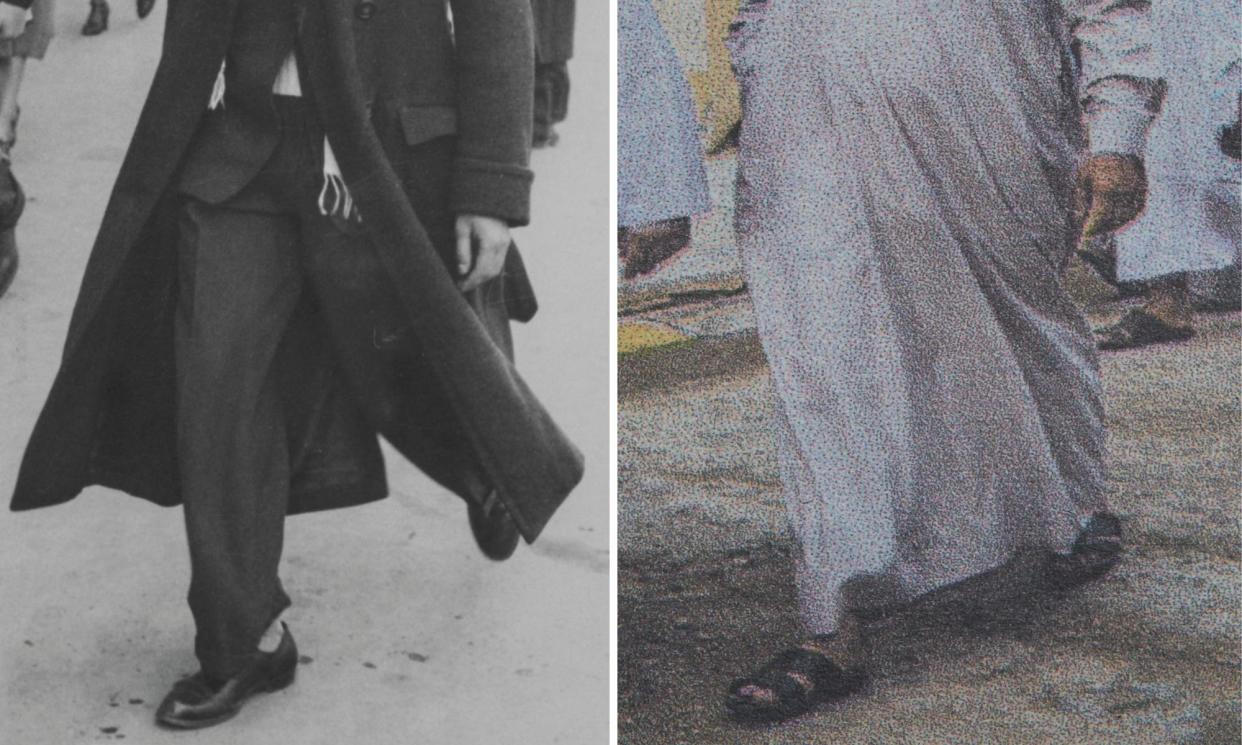‘It’s never a pleasant image’: why fashion’s hottest photographer has a leg fixation

Halfway through our interview, I tell Alessio Bolzoni that he is unusual: a fashion photographer without an ego. He snorts with laughter. “There’s no way you can do the work and share it with people without a bit of ego,” he says. “But I try to talk to it and work with it.”
Bolzoni’s ego has certainly been stroked recently: he worked on campaigns for brand-of-the-moment Miu Miu and took some very sweaty and sexy on-court shots of Zendaya, Mike Faist and Josh O’Connor to promote Luca Guadagnino’s stylish tennis film Challengers. But alongside this, the Italian-born photographer also produces artwork. An exhibition, There’s a Fine Line Between Love and Hate, You See, opens this month at VO Curations gallery in London.
The art scene is very poor in Italy – the bad decades of Berlusconi destroyed what was amazing
Bolzoni’s work in fashion, with its awkward poses and contrasting backdrops, could be described as quirky and arty, while also making clothes look really good. By contrast, in his artwork, he goes deep with high-minded statements and references, to Sigmund Freud, Slavoj Žižek and more. Take the diptych series Accumulo, which combines found images and newspaper pictures of people cropped to show just their legs. “My focus,” he says, “was people walking. Then I understood that the part that was interesting to me was the legs. It was magical to find details that match perfectly – the position of the foot or the same shadow.”
The title of the work refers to a wider theme for Bolzoni: the images we are now bombarded with. “It is crazy, overwhelming. A bunch of images every day.” While he is, of course, contributing to this explosion, his artworks increasingly incorporate found imagery. Ebay, another series, features collages made from photographs of a 1950s family found on the online marketplace.
“Photography is really stuck with reality,” he says “which is very fascinating, but also very limited. We have to bend that limit.” He cites Roni Horn and Anne Collier as influences and likes to take “visual notes” – snaps on his iPhone of things that catch his eye. The last picture he took is a slightly surreal image captured on a sunny London street. At first glance, the object in it looks like a sculpture, or a giant piece of discarded chewing gum, but is actually a screwed-up white T-shirt.
Playing with perception fits into Bolzoni’s interest in the uncanny – an idea that feels more relevant than ever in a digital world where things are often not what they seem. “It’s something I really like to play with,” he says. “It’s never a pleasant image. I want you to feel something. I want you to engage – and respond.”
He takes a sip of his tea, served from a silver teapot in this rarefied Marylebone hotel. Now based in London, after living in Paris, the 44-year-old is dressed in the fashion photographer uniform of artfully rumpled shirt and chunky trainers (Rankin wears something similar, as does Juergen Teller, although his trainers are paired with neon shorts). It signposts how, even with his artistic work, he remains immersed in fashion: he was excited to work with influential Miu Miu stylist Lotta Volkova and describes Guadagnino as “like a brother”. Is fashion glamorous? “When you are shooting out in the street, sweating in 40 degrees – no.” He laughs and adds: “But it’s quite fun. You meet fantastic people.”
Bolzoni hails from Crema, near Milan. He first became interested in photography as a teenager. He was schooled by his art teacher and the proprietor of a 24-hour store. His interest in found imagery began early too – with a metal box his grandmother had, full of family photographs. Using his dark room, he reprinted these from the negatives, framing them for a Christmas present.
Bolzoni’s career took off in the 2010s, when he began working with brands like Kris Van Assche and Phillip Lim, making him a relatively late bloomer – he’d just entered his 30s – in an industry obsessed with youth. Leaving Italy was crucial. “I had limits there,” he says. “The art scene is very poor. The bad decades of Berlusconi – they destroyed what was amazing in Italy, from after the war up until the 60s and 70s. From the 80s on, everything was lost.”
He returned to Milan at the start of the pandemic. The sojourn led to one of Bolzoni’s favourite projects – 2018’s Abuse, which consists of portraits of people making twisted poses, their faces concealed – gaining more attention. He persuaded the owners of billboards to feature these photographs instead of adverts. “This was an idea I had when I was at school,” he says. “Driving through the city and seeing these bodies coming out from buildings was very emotional. You catch one and wonder, ‘What is that?’ I didn’t put my name on them, though. There’s no explanation. You take from them what you want.”
The same applies to all of his artwork. “There’s no solutions, there’s no positions,” he says. The care Bolzoni takes not to come down on one side goes for the fashion world too. When I ask which brands he might like to work with next, he says: “I’ve got no response to that. You have to be very political, give a lot of appreciation to the people that call you, ask to work with you. I never take it for granted.”
• There’s a Fine Line Between Love and Hate, You See is at VO Curations, London, from 21 June to 6 July

 Yahoo News
Yahoo News 
